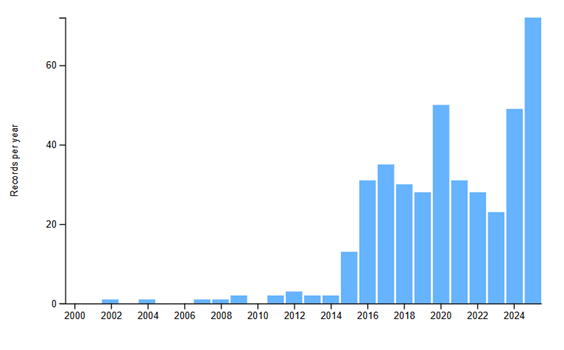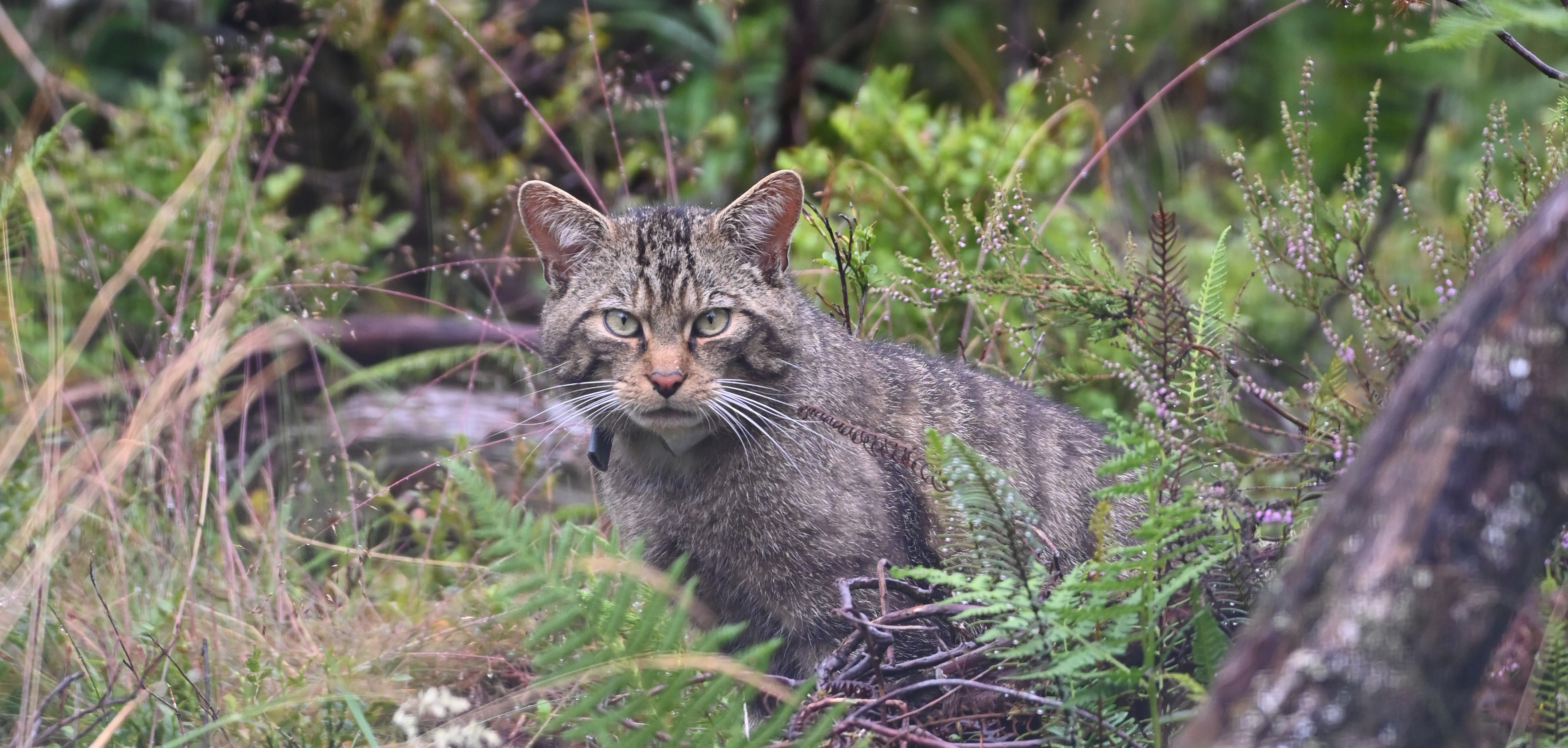You are our eyes on the ground
Perhaps you have an interesting looking cat visiting your back garden that you know isn’t one of your neighbours’ pets. Or possibly you use a camera trap, and you’ve managed to get some photos of a cat with a distinctive ringed tail. Or maybe you are just out for a walk and spot a wildcat or hybrid. What can you do with this knowledge?
Since Scottish Wildcat Action was launched in 2015, sightings from the public on the presence of wildcats, feral domestic cats and hybrids (cats with both domesitc and wildcat ancestry) has been a key source of information for our work (see map). The ever-increasing number of sightings reported (see graph) is testament to how the public have embraced both our work and the advent of technology that allows better identification from photos and easier reporting through websites and phone apps. Such data can help us with conservation planning for wildcats, for example by identifying sites where there are hybrids or feral cats which may need to be targeted for neutering, or areas where there are few of either, but suitable habitat and prey for future wildcat releases. Data on wildcat locations is also useful to ecologists surveying for sensitive species ahead of new building and development proposals. Data from the public has even been used to validate a new habitat suitability map for wildcats in Scotland.

Records of wildcat submitted via iRecord since 2000, showing the uptick when the previous project started in 2015 and the very high rates of reporting over the past two years.
As the work of Saving Wildcats progresses, such information is ever more helpful for the project team. In addition to identifying hybrid and feral cat ‘hot spots’ mentioned above, the Saving Wildcats team also rely heavily on public sightings, in helping to track wildcats in the release area. That includes help in identifying when wildcat females have produced kittens, locating places where wildcats could be trapped so that GPS-radio collars could be replaced, locating wildcats without GPS-radio collars, and having the opportunity to observe the condition of released wildcats.
Unfortunately, it is very difficult to get a handle on the distribution of the prey species which wildcats rely on, including small mammals such as field vole, bank vole and wood mouse alongside brown hare and rabbit. So, reporting sightings of these animals is also vital to researchers. Small mammals, in particular, are under-reported.

Map of verified cat sightings (assessed visually using pelage, or coat markings) in northern and central mainland Scotland submitted via iRecord since 2020.
Any intel you can provide could make a big difference. You can report sightings online through iRecord using the mammal recording form or by downloading the Mammal Mapper app. If you can get a photo of a cat, that really helps verification - particularly if you are reporting a wildcat sighting! Wildcats can be notoriously difficult to differentiate from domestic cats, but further information about wildcat identification can be found on NatureScot’s website. Data submitted to iRecord is passed on to the NBN Atlas for Scotland, which is a resource used by ecologist professionals.
If you live within the Saving Wildcats project area (Badenoch and Strathspey) and repeatedly see a wildcat at the same location, please keep reporting sightings using the above methods and include photos of the wildcat! Videos can be emailed to us at wildcats@rzss.org.uk. These photos will allow the project team to assess whether it’s the same animal each time.
You are our eyes on the ground. Any information you send us is greatly appreciated and will contribute directly to wildcat conservation!

